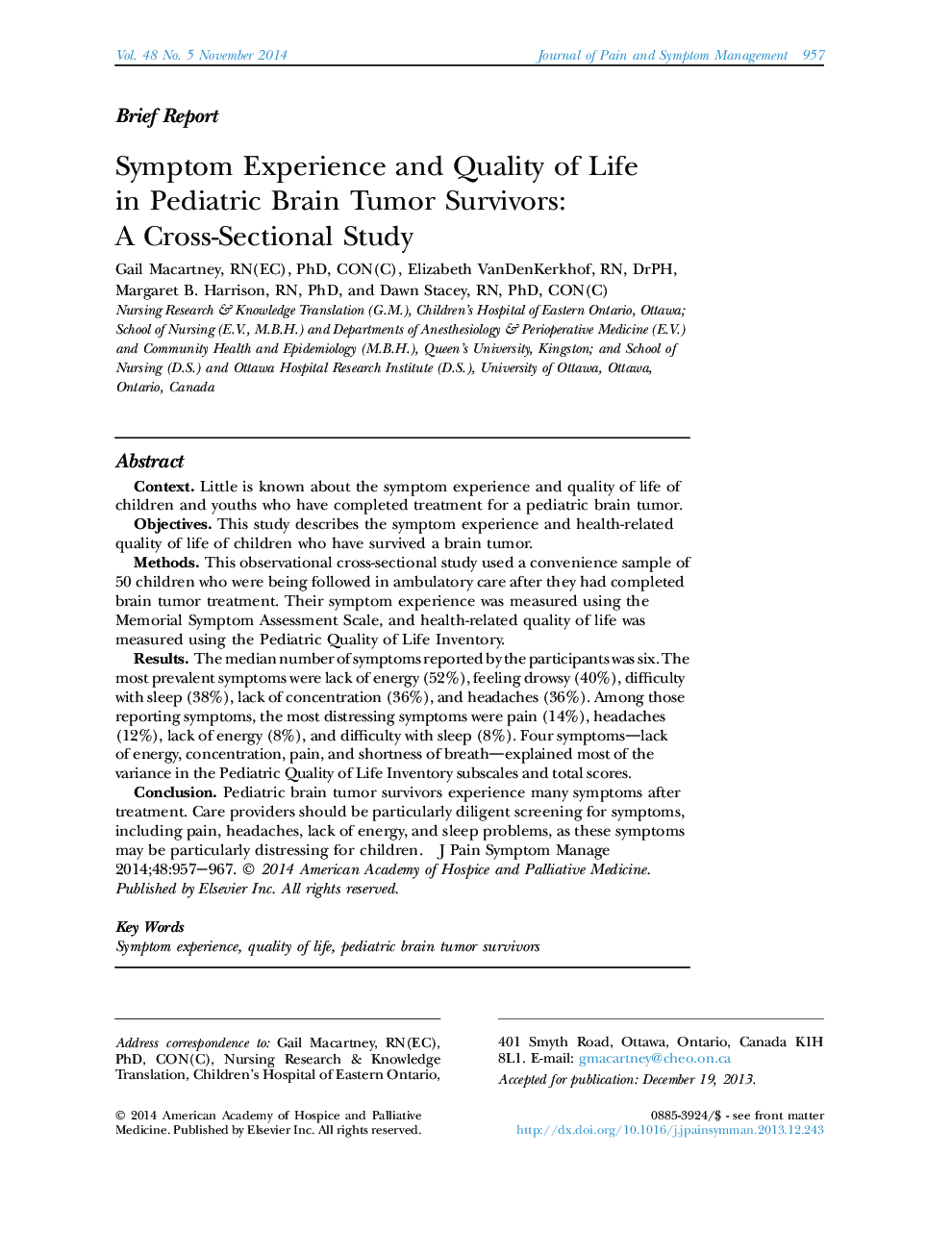| Article ID | Journal | Published Year | Pages | File Type |
|---|---|---|---|---|
| 2729873 | Journal of Pain and Symptom Management | 2014 | 11 Pages |
ContextLittle is known about the symptom experience and quality of life of children and youths who have completed treatment for a pediatric brain tumor.ObjectivesThis study describes the symptom experience and health-related quality of life of children who have survived a brain tumor.MethodsThis observational cross-sectional study used a convenience sample of 50 children who were being followed in ambulatory care after they had completed brain tumor treatment. Their symptom experience was measured using the Memorial Symptom Assessment Scale, and health-related quality of life was measured using the Pediatric Quality of Life Inventory.ResultsThe median number of symptoms reported by the participants was six. The most prevalent symptoms were lack of energy (52%), feeling drowsy (40%), difficulty with sleep (38%), lack of concentration (36%), and headaches (36%). Among those reporting symptoms, the most distressing symptoms were pain (14%), headaches (12%), lack of energy (8%), and difficulty with sleep (8%). Four symptoms—lack of energy, concentration, pain, and shortness of breath—explained most of the variance in the Pediatric Quality of Life Inventory subscales and total scores.ConclusionPediatric brain tumor survivors experience many symptoms after treatment. Care providers should be particularly diligent screening for symptoms, including pain, headaches, lack of energy, and sleep problems, as these symptoms may be particularly distressing for children.
